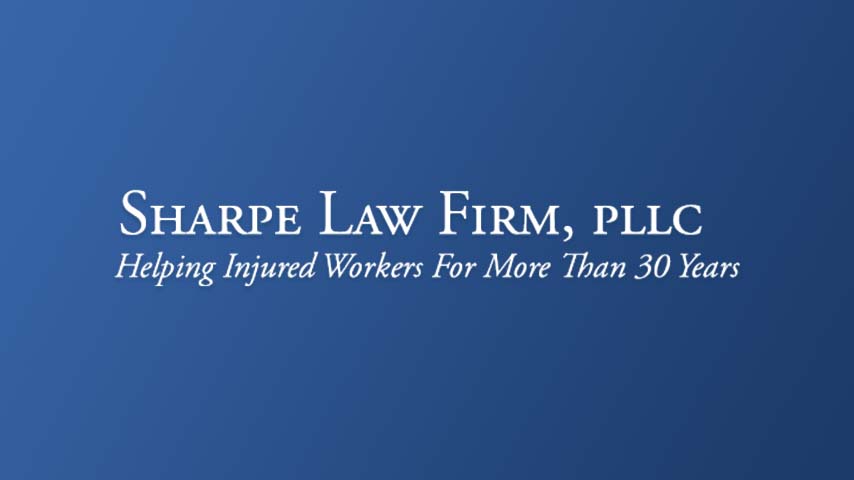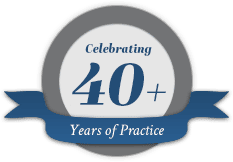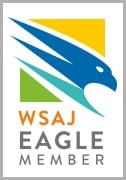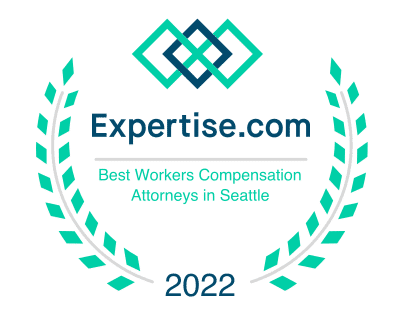What is L&I Vocational Training?
Vocational Training is a program for injured workers who have not returned to work. Vocational retraining exists because L&I can’t close your claim until you either do return to work, or you “can” return to work. See RCW 51.32.095
What are L&I Vocational Services
Vocational rehabilitation services involve an ability to work assessment, plan development, vocational training, and other services.

The Good the Bad and the Ugly of L&I Vocational Services and Vocational Training.
The good part is that vocational services are designed to get you back to work. The bad part is that getting you back to work includes any job at any rate of pay. It is just plain ugly that a worker injured at a high paying job who can no longer perform at that job, can be retrained by L&I as a parking lot attendant for minimum wage. Don’t let L&I do that to you. Inform yourself and protect your rights.
Who decides if I get L&I Vocational Services, L&I Retraining, and Help Getting a Job?
If you’re working, you don’t qualify for vocational services. If a doctor says you can work you won’t be offered vocational services. However, if your doctor has taken you off work due to the effects of your injury, then after approximately 90 days, the Department of Labor and Industries or your Self Insured employer will hire a private vocational counselor (VRC).
What is an L&I Vocational Rehabilitation Counselor (VRC)?
The vocational rehabilitation counselor works for L&I, or the Self-Insured employer. The VRC makes recommendations about your employment future. This VRC will do an ability to work assessment to look at your employment history and skills. Your employment history and skills or lack thereof determine if you get any training or schooling to help with your return to work. The vocational rehabilitation counselor will send their assessment report to your claims manager, recommending what they think is needed, if anything, for you to return to the workforce. Based on this report, your claims manager will decide whether or not you get vocational services.
What is an Ability to Work Assessment?
The Ability to Work Assessment is a report which is completed by a vocational rehabilitation counselor. There are a number of items the vocational counselor must address in the vocational assessment process. Some of the things a counselor will consider are:
- Your age, education, and work history.
- Your transferable skills.
- Any preexisting physical or mental conditions that may effect your ability to work.
- The physical and mental conditions caused by your injury, and any permanent medical restrictions that arise from your injuries.
- Your previous work pattern, full time/part time/seasonal, etc.
The VRC will then use this assessment to decide if you are currently employable. You are currently employable if you can return to work at any job with any employer, at any legal pay rate, based on your job skills, your transferable skills, and your physical ability. Keep in mind that the VRC works for L&I or the Self -insured. Their opinion about employability may be different than your opinion

How does L&I Decide if I Qualify for Vocational Training?
L&I looks at return to work priorities including inability to return to work with employer, past employment, or similar employment.
Before an injured worker gets retraining he/she must be unable to return to work with his/her employer of injury, in the same or modified position, regardless of pay or benefits. Washington does not have a comparable wage law. Therefore, if the injured worker is physically capable of returning to some form of work with the employer of injury, even at wages that are significantly lower than that earned at the time of injury, he/she is not entitled to vocational retraining.
Before an injured worker gets retraining he/she must be physically unable to return to a position performed at some point in the past. Also, no retraining if you have sufficient transferable skills to allow you to return to the workforce in any gainful capacity.
For example a construction worker making $60.00 per hour at the time of the industrial injury may not be entitled to vocational retraining if in the past, he/she worked as a pizza delivery driver, earning minimum wage and it is determined that this worker is now physically capable of being a delivery driver.
However if the assessment report indicates you do not meet any of the above return to work priorities then L&I should conclude that you are not employable and that you will likely benefit from vocational services. Your next step will be vocational plan development.
What Happens if I Do Not Qualify for Vocational Services?
A great deal of effort is placed in the assessment phase of the vocational process. If even one of the return to work priorities is approved, it will be determined that you, the injured worker, are “employable” and not in need of vocational retraining. If you are found even minimally “employable” by the vocational assessment you will find your workers compensation time loss cut off and the claims manager will then move the claim on to final resolution and claim closure.
Can I Dispute L&I’s Unfavorable Employability Determination to VDRO?
Yes you can. L&I provides vocational services to injured workers who are not employable. Employability is a legal decision, based on facts and opinion. When considering whether they will provide vocational services, L&I makes vocational decisions. L&I often makes incorrect decisions. If you don’t agree with a vocational decision then challenge it. Your dispute, protest, or appeal is the proper way to disagree with a vocational decision and ask for a better decision.
Pay attention to this: if you don’t like L&I decisions then don’t ignore them. An ignored decision becomes a final order. There are three different ways to challenge a wrong vocational decision: Dispute, Protest, or Appeal. You may choose to do a dispute or reconsideration yourself, or you can talk with a lawyer. If you want to appeal, you should talk with an L&I lawyer. The Law of Vocational Dispute is at RCW 51.32.095(6) and WAC 296-19A-410 to 460. The Law of Protest and Appeal can be reviewed at How to Disagree with an L&I Decision.
What is a dispute of vocational services?
A vocational dispute is a formal written disagreement with an L&I vocational decision.
What can be Disputed?
- A dispute can be used to challenge employability determinations, eligibility for plan development, approved retraining plans, and plan modification. These are the only issues which can be the subject of an L&I dispute. Disputes are made to VDRO per WAC 296-19A-440.
- A Protest or Appeal can be used to challenge employability determinations, eligibility for plan development, approved retraining plans, plan modification, and unfavorable L&I decisions.
What is an employability determination?
An employability determination is a discretionary vocational decision made by L&I. L&I decides if vocational rehabilitation is or is not, necessary and likely, to enable the injured worker to become employable at gainful employment, RCW51.32.095. L&I makes this employability determination. If you don’t like the employability determination, then you can dispute, reconsider or appeal it.
What is a discretionary decision?
Discretionary decision refers to the standard of review used to examine the correctness of the L&I director’s decision. This means that if the director does not abuse his discretion, then his vocational decisions will be upheld after a vocational challenge. Simply stated, winning a vocational challenge is challenging. However the director abuses his discretion on a regular basis. These cases can be won.
Keep in mind that under the discretionary standard, the reviewing agency will not make a decision about the merits of your vocational situation, rather their decision is limited to whether the director has been arbitrary or capacious in the use of his discretion when he denied your vocational services. See what to dispute, or reconsider, or appeal above.
Can I Apply for School on My Own?
You can apply for and attend school on your own. This is something you may wish to consider because L&I may not supply you with any or adequate or timely vocational help. Applying for school on your own is better than being on time loss and staring at the wall. L&I should like it because its a benefit to them to have you trained. If you can’t afford school yourself, consider getting help from DVR, Pell Grants, or FAFSA. Don’t take no for an answer. If L&I or one of these agencies doesn’t want you to get training while on time loss, then consult with a lawyer.

What is L&I Plan Development?
Once it has been determined that vocational services will be provided, L&I plan development starts. Plan development necessitates on interaction between the injured worker and L&I’s vocational counselor.
In theory, you two individuals will work together to develop a vocational rehabilitation plan designed to help the injured worker become “employable at gainful employment.” Under Washington Law, however, there are no guarantees of employment at the completion of the plan. Vocational counselors need not find an injured worker a job. They need only establish that the injured worker is employable. Consider getting legal advice immediately if you are not being treated fairly.
There are very strict timelines that you must be aware of when entering into plan development. The vocational plan for an individual worker must be completed and submitted to the department within ninety (90) days of the day the worker commences vocational plan development.
Any plan must be approved through the Department or self insured employer. There are more deadlines that you will be asked to cooperate with in plan development. Unforeseen complications can cause delays, and the delays can complicate or ruin a good plan. Try and help move things along – for your own benefit.
My Employer Just Made Me a Job Offer, Can They Do This Now?
Yes they can, if it is a valid job offer. To be valid the offer must be for bona fide gainful employment with the employer of injury, consistent with the workers documented physical and mental restrictions.
A bona fide job offer has the following characteristics:
1) It is reasonably continuous or matches the worker’s employment pattern at the time of injury.
2) It is gainful: paying at least at the relevant minimum wage. (Note: the pay and healthcare benefits do not need to be identical to those of the job of injury).
3) It is meaningful: both inherently valuable to the employer and not demeaning to the worker.
The employer may offer a bona fide permanent job that is generally available to any worker (meaning it commonly exists in the labor market). Alternatively, the employer may offer a bona fide permanent job that is uniquely created for a particular injured worker, and is not generally available (this may be considered “odd lot” employment). The fact that a job offer is for ‘odd lot’ employment does not by itself mean that it is not a bona fide job.
If a claimant declines a bona fide permanent job offer that is generally available, the worker should be considered “employable”. If the worker declines an “odd lot” job, and the worker is considered “employable”, it will be necessary for the Department to show on appeal that the “odd lot” job was bona fide through a forensic referral.
If the employer modifies the demands of a permanent job offer, so that it exceeds the limits medically approved and the claim is still open, the worker may be eligible for time-loss compensation benefits.
If your employer offers a bogus job and you think he will fire you as soon as you return to work or the claim closes, talk to an attorney.
What Kind of L&I Job Training can I Get?
Injured workers should start thinking early about their vocational futures and take the lead to investigate alternative types of employment. When injured workers understand early on in the process that L&I job retraining benefits are available, they can focus on successful schooling alternatives
The workers compensation vocational benefits law is set out in RCW 51.32.099
Costs for vocational plans may include books, tuition, fees, supplies, equipment, child or dependent care, training fees for on-the-job training, the cost of furnishing tools and other equipment necessary for self-employment or reemployment, and other necessary expenses. The maximum retraining cost is adjusted July 1 each year and the new amount is available for plans approved on or after July 1.
The duration of the vocational plan shall not exceed two years from the date the plan is implemented.
L&I demands a certain level of cooperation with vocational plans. See Your Rights and Responsibilities during Plan Implementation.
If you do qualify for job training, keep a close eye on the quality of your retraining.
L&I and Self Insured employers have a history of partnering with unaccredited private vocational schools. These sham schools have been known to provide inadequate training and then write off their poorly trained student as “employable.” Don’t let them do this to you.
Do I Continue to Get Time Loss if I’m Getting L&I Vocational Retraining?
Yes, the worker shall receive time loss compensation under RCW 51.32.090 and the cost of transportation while he/she is actively and successfully participating in L&I job retraining.
L&I Vocational Training Plan Options
Vocational plan development services are completed within ninety days of commencing. Once the plan is approved, you will have two options. Within fifteen (15) days of approval of the plan you must choose your option. Choosing which option is right for you is really important, you need to fully understand how your selection will affect your benefits.
| Vocational Option 1
Follow your L&I-approved plan | Vocational Option 2
Develop your own plan | |
| Total amount available for vocational training |
|
|
| Time limit for training | 2 years | 5 years |
| Training plan | You are required to follow the L&I-approved plan developed by the VRC. | You can use your training money for tuition or training costs for L&I-approved programs. The retraining goal or program you choose can be different from the retraining plan L&I approved. |
| Time-loss compensation | You will continue to receive time-loss compensation as long as you participate and meet all the requirements of the approved plan. | Time-loss payments will end and your claim will close. You will receive a vocational award equal to 9 months of time-loss compensation, paid out every 2 weeks. |
| Medical benefits | You will continue to receive medical benefits related to your injury or disease as long as you participate and meet all the requirements of your approved plan. | Your claim will close and medical benefits will end. |
Option 1:
The worker participates in the vocational plan developed by the vocational counselor. The maximum retraining benefit is two years. The usual retraining benefit is shorter. Time loss money continues for the duration of the approved plan.
Option 2:
The worker declines further vocational services under the claim, medical treatment ends, time loss ends and the claim closes. The worker is paid settlement money in an amount equal to nine months of time loss compensation under RCW 51.32.090. The award is payable in biweekly payments in accordance with the schedule of temporary total disability payments, even if the worker has returned to work. The worker can request a lump sum.
The vocational money remains available for use by the worker for a period of five years. The vocational money is made available by application, for programs or courses at any accredited or licensed institution and can be used for tuition, books fees, etc., without department or self-insurer oversight. Option 2 can only be elected once per worker. No time loss money is paid during option 2 retraining.
These links will provide you more information about your Training Options and Option 2
What if I Get a Bad Vocational Rehabilitation Counselor?
Vocational counselors make tough decisions. Some of them are good people doing the best they can. Some vocational counselors and vocational firms are just plain bad: They can be ineffective, lazy, and bad for your employment prospects.
You can submit concerns or a complaint to L&I about a vocational counselor or firm at any time. Find the Vocational Service Specialist assigned to your claim and let them know your concerns.
WAC 296-19A-262 This Administrative Code sets out corrective action and sanctions for vocational conduct that does not comply with the law. Take action if you are being mistreated. File a complaint or talk with a workers compensation lawyer about what you can do.

Job Modifications
An injured worker with an open claim and a job or job offer, who has restrictions due to their accepted concision(s), may qualify for job modifications assistance. Job modifications are an adjustment or alteration to the way a job is performed. it often involves the purchase or modification of tools or equipment. See RCW 51.32.095 (5), WAC 296-19A-180 and WAC 296-19A-010(9) for the law. See our Job Modifications section for further explanation of this benefit.
Pre Job Accommodations
Pre job accommodations are alterations or adjustments made to the way a job will be performed, to accommodate the restrictions imposed by the job injury or occupational disease. The purpose is to make it possible for the worker to perform the essential functions of a job.
To successfully apply, the injured worker cannot have a job, rather, they should be engaged in a job search or vocational rehabilitation plan, WAC 296-19A-010(10): See our Pre-Job Accommodations section for further explanation of this benefit.
Stay at Work Program
The stay at work program is a benefit to employers and provides money reimbursement to State Fund employers who offer transitional or light duty work to their injured workers. Several limitations apply, including a maximum of 66 work days of reimbursement.
What Happens When My Vocational Plan is Over? Claim Closure!
Once the vocational rehabilitation is done, either by plan completion or election of option 2, L&I will terminate time loss benefits. Labor and Industries will thereafter move to close the claim with any permanent partial disability (PPD) award which is indicated. You need to be sure you do the work to get a good PPD settlement. If you don’t do it, who will? For PPD settlement help see: Permanent Partial Disability Settlement











